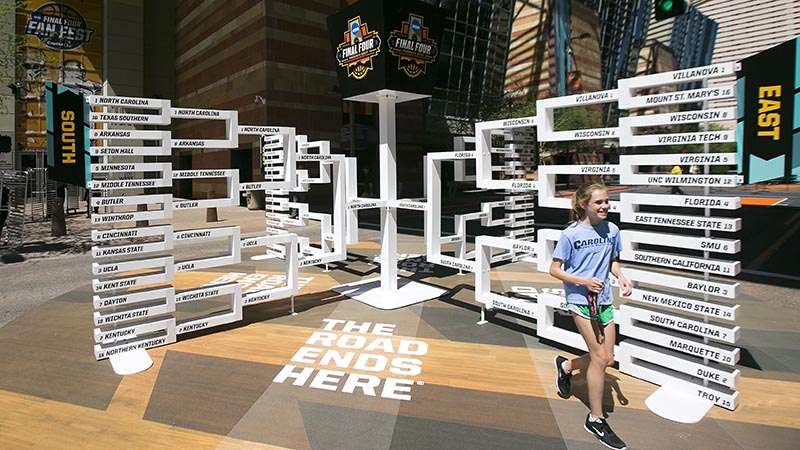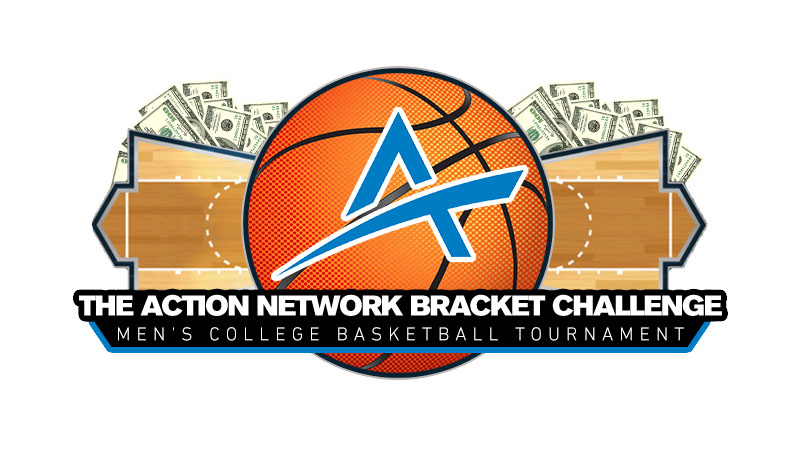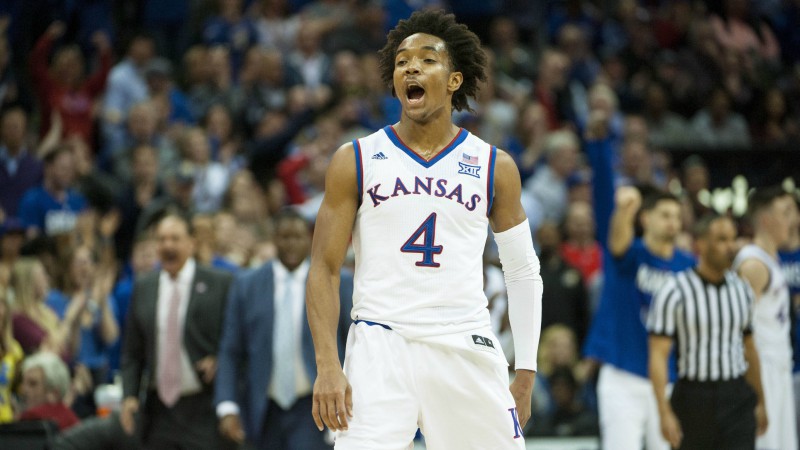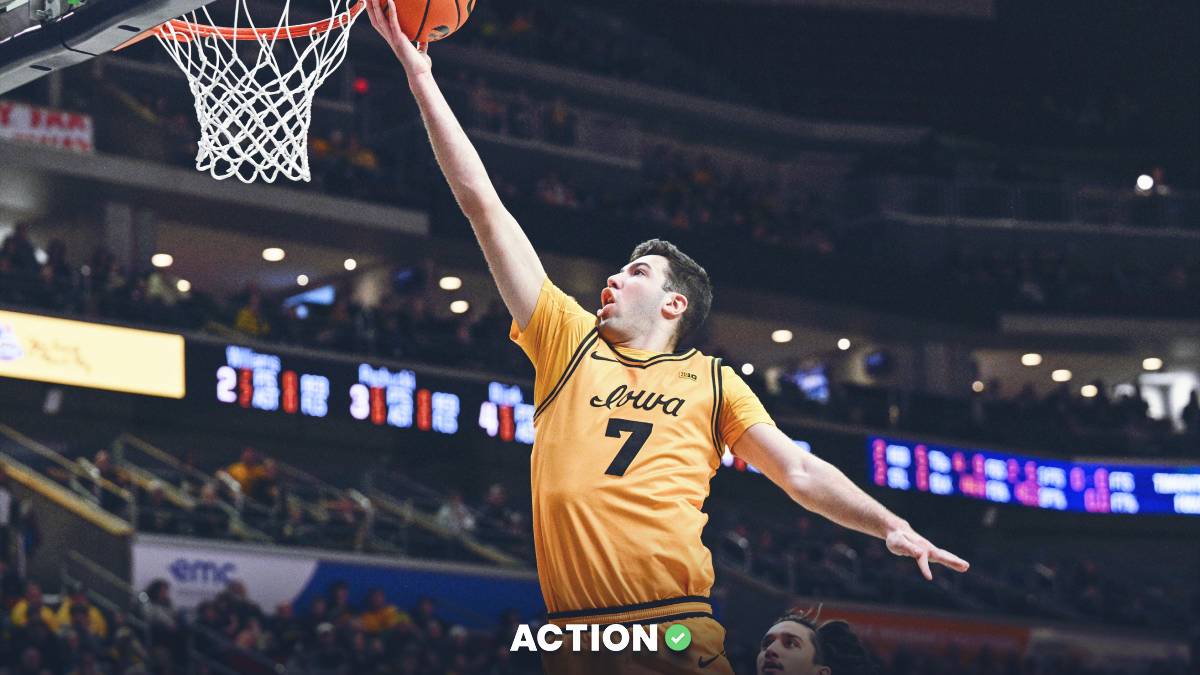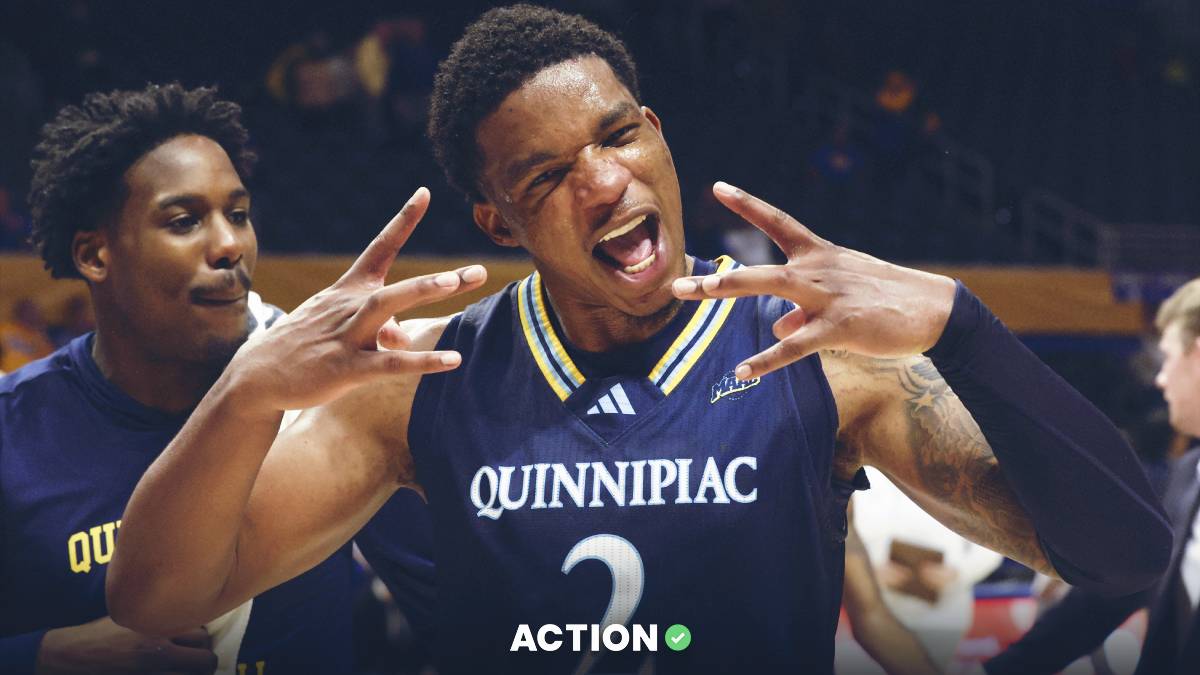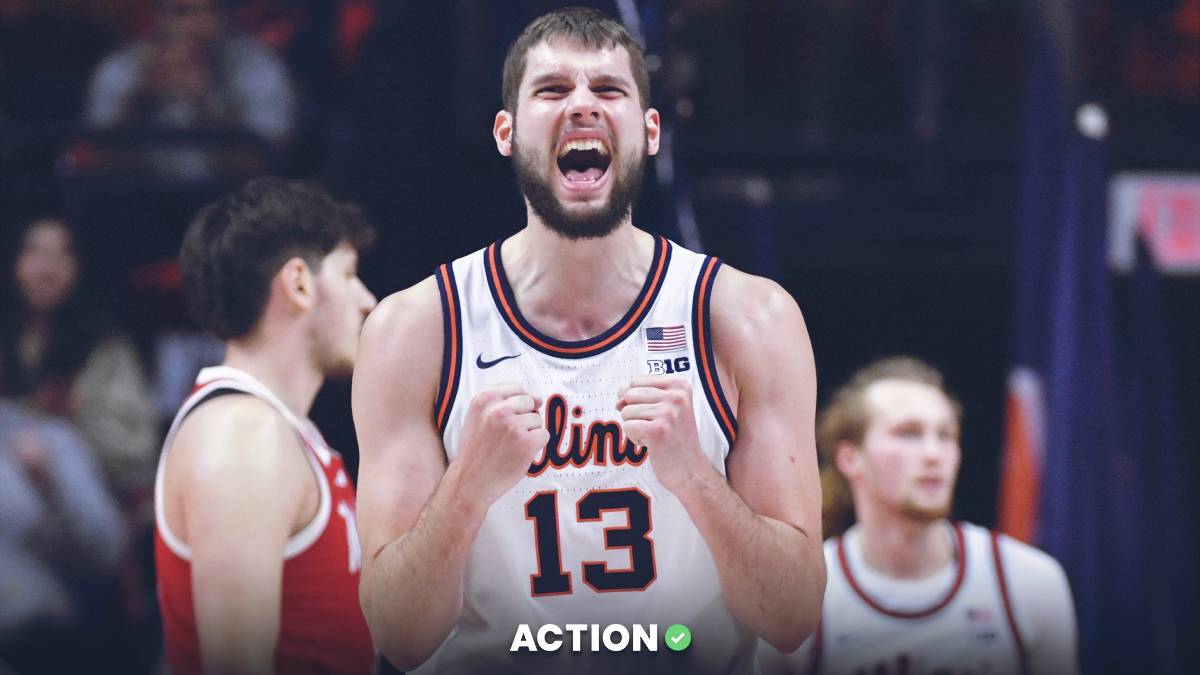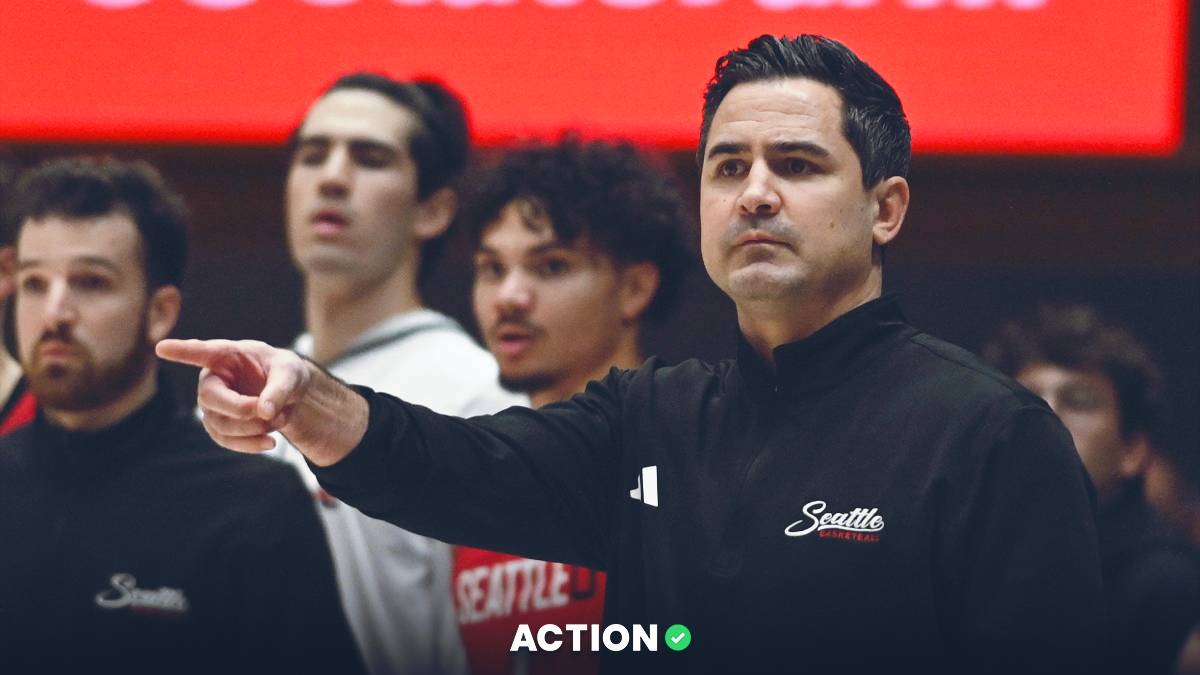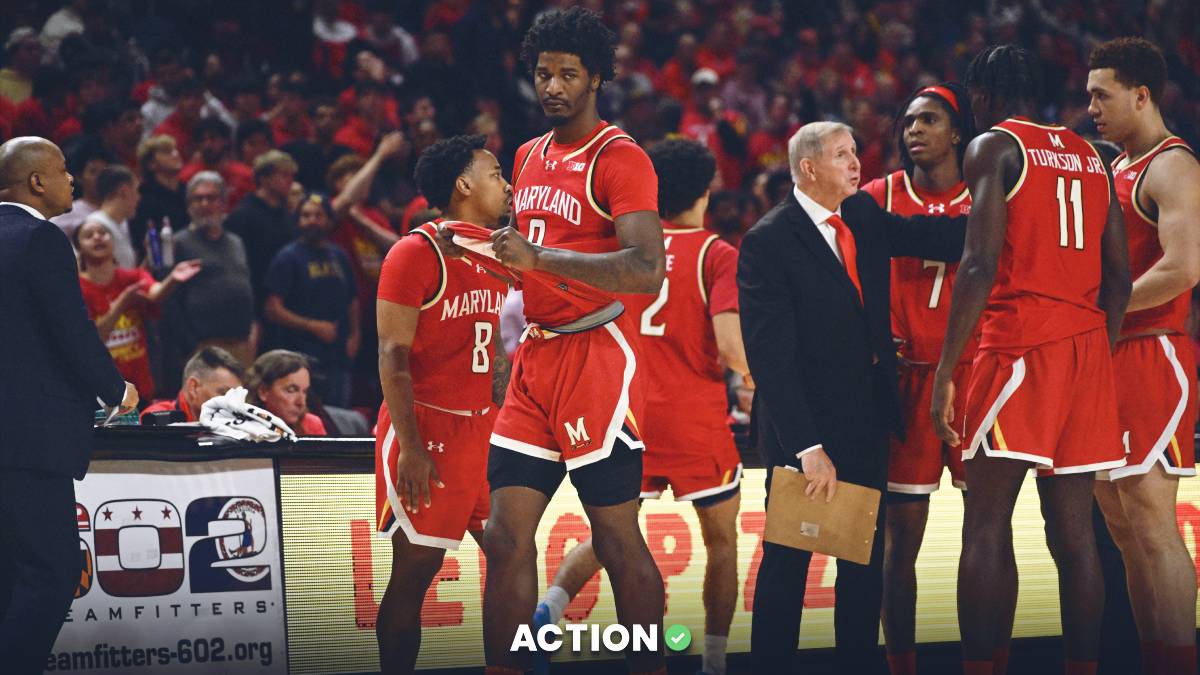Sign up for The Action Network’s daily newsletter to have the best sports betting insight and analysis delivered to your inbox.
As a bettor, you might ignore March Madness pools. You're focused on spreads and totals in college basketball.
This is a mistake. Value erupts from March Madness pools like Bobby Knight's anger over officiating. You'll see data based evidence of this below.
To best extract the value from pools, you should enter a small pool with about 10 people and use analytics. My methods at The Power Rank have predicted the winner of 71.4% of games the past 16 tournaments. Below, I'll show the odds for winning small pools with these predictions.
However, you might not be able to enter a small pool. It's much easier to answer a friend's email than go searching for a small pool.
Fortunately, there's a strategy for increasing your odds of winning medium-sized pools. And surprisingly, it involves picking a champion with a lower win probability than the favorite.
To see why this works, let's examine your objective in filling out a bracket.
The contrarian approach to picking a champion
Consider these two different objectives you might maximize in filling out your pool:
- the expected number of points the bracket earns
- the probability of winning the pool
These two goals are not the same and require different strategies.
To maximize the expected number of points your bracket earns, you can rely on accurate analytics. For example, consider a Round of 64 game in which Kansas has a 97% chance to win. This win probability implies that if Kansas played this game 100 times, they would win 97 of those games. On average, picking Kansas gets you 0.97 expected points, or 97 divided by 100. By picking Kansas's opponent, you get 0.03 expected points, not a wise move.
However, picking all favorites is not the best strategy for winning a medium-sized pool. In most years, this requires picking the same champion as many other people in your pool. If this team wins the tourney, you get the 32 points for the correct choice of champion. However, many others also get these points.
The winner of the pool now comes down to picks in earlier rounds. With so many other people still in contention, one of them will get lucky with their picks. The randomness from other brackets in your pool prevents you from finishing first.
Maximizing your chance of winning your pool requires not only analytics but the right strategy based on the bracket choices of others in your pool. While you can't look your competitors' brackets before they lock, the statistics that ESPN publishes on the millions of brackets submitted to their site allow for reasonable estimates.
With this information, you can make a contrarian choice for the tournament champion. You want to find a team that has a good chance to win the tourney but gets picked in few other brackets. If this team wins, you get 32 points that not many others will have. Your solid choices in earlier rounds based on analytics should secure the victory.
Before analyzing this year's bracket, let's look at how this contrarian strategy for picking a champion has performed in a number of previous tourneys.
Going contrarian worked in 2010
Kansas entered the tournament as a huge favorite in 2010. Behind the dual-threat Morris twins (Marcus and Markieff), the Jayhawks lost only twice the entire season.
Kansas had a 31.1% chance to win the tourney by my numbers, the best win probability by more than 10%. However, the public knew the strength of these Jayhawks, as a whopping 41.8% of brackets submitted to ESPN picked them as champions.
The contrarian choice in 2010 was, surprisingly, Duke. Despite being a No. 1 seed and owning a 29-5 record entering the tournament, only 6.5% of public brackets had Duke as champion. But my calculations gave them a 20.9% chance to cut down the nets, the second-highest odds in The Power Rank behind only Kansas. Later, we'll see the importance of this big gap between win probability and public pick rate.
I performed simulations for both the favorites and contrarian strategies for different pool sizes. Since Kansas and Duke were the top two teams in my rankings, the switch between these strategies required only one change. The favorites bracket had Kansas as champion while the contrarian bracket had Duke as champion. Otherwise, the brackets were the same.
Picking the favorite Kansas as champion gave you the best chance to win small pools. For a 10-person pool, the choice of Kansas led to a 38% chance while Duke offered a 30% chance.
In 2010, the pool win probability for the favorites and contrarian strategies were equal for a pool size of 20. Both choices led to about a 20% chance to win a pool. For bigger pools, the contrarian strategy enjoyed an increasingly large edge over the favorites.
For example, the contrarian strategy with Duke as champion for a 50-person pool gave you a 14.8% chance to win your pool. Picking the favorites with Kansas as champion offered a 10% win probability. That means the contrarian strategy increased your odds by almost 50%.
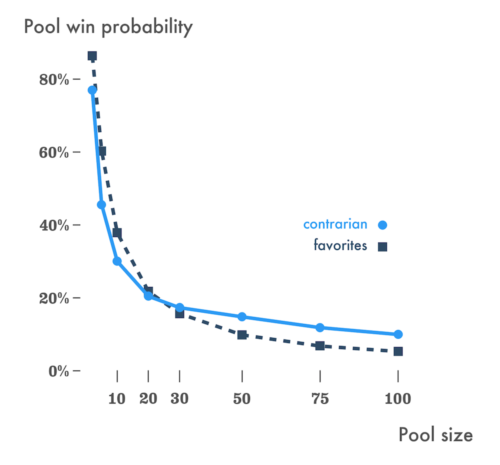
However, the chance to win a pool with the contrarian strategy decreased with larger pools. Even with the right tactics, remember the first rule of winning a pool: Don't get in a big pool.
In the actual 2010 tournament, Duke made the Final Four but found none of the other pre-tourney favorites as their competitors. Kansas lost to Northern Iowa in the Round of 32, while Kentucky fell to West Virginia in the Elite 8. Syracuse fell victim to an upstart Butler team that wasn't even in the top 25 of The Power Rank entering the tourney.
Despite the lack of big-name teams in the Final Four, Duke didn't just waltz to the championship. In the final against Butler, the Blue Devils had a one-point lead in the final seconds with big man Brian Zoubek on the line. He made the first but missed the second free throw. Butler's Gordon Hayward scooped up the rebound, dribbled to half court and launched a shot.
If Hayward's shot drops, it's the greatest upset in the history of sports. Instead, it bounced off the backboard and rim to preserve a Duke win. It also most likely gave those who used the contrarian strategy of picking a champion a great chance to win their pool.
The contrarian strategy doesn't always work
In 2012, Kentucky entered the tourney as the huge favorite. My numbers gave Kentucky a 28.4% win probability while 35.1% of brackets chose them as champion.
In contrast, Ohio State didn't seem like a title contender. Entering the tournament, the Buckeyes had seven losses, and only 4.8% of brackets picked them as champion.
However, Ohio State played a difficult schedule that included Kansas and numerous strong teams from the Big Ten. My numbers rewarded Ohio State for this strength of schedule as it ranked second behind Kentucky in my pre-tourney rankings.
Ohio State had a robust 17.2% chance to win, large compared to the 4.8% pick rate from the public. This made Ohio State the contrarian choice for champion.
Ohio State made a valiant run to the Final Four, but it lost to Kansas in the national semi-final game. Kentucky beat Kansas to win the tourney.
The contrarian strategy had different results in 2010 and 2012, but the point remains: You should be targeting teams in your bracket that have a much higher win probability than the public suspects.
The best scenario of them all
Some years, the contrarian choice for champion has the highest win probability by my numbers. This situation provides an excellent opportunity to win your pool.
Let's look at 2017 as an example. Gonzaga had the highest win probability at 33.5% by my numbers, much larger than the 8.5% of the public picking them as champion.
Gonzaga's 33.5% win probability might seem high. However, it reflected its easy path to the championship. Gonzaga, the 1-seed in a West, had a weak 2-seed in Arizona, 21st in my team rankings, in its region. Also, Gonzaga wouldn't face other power teams like North Carolina or Kentucky until the final.
Gonzaga was an excellent contrarian choice. However, despite the numbers, I also thought North Carolina was a slightly better team than Gonzaga. If these two top teams met in the title game, North Carolina would be a small favorite.
I told my members at The Power Rank to submit two brackets. Both would have chalk by the numbers in all picks except the champion. One bracket would pick the contrarian favorite Gonzaga while the other had North Carolina as champion.
Ryan Peters of Omaha, Nebraska, followed my advice. Before the start of the championship game, he had the top two brackets in his pool. It didn't matter that North Carolina, which closed as a 1-point favorite, edged Gonzaga to win the tournament. Ryan was winning his pool.
The contrarian-as-favorite strategy also applied in 2008. The public favored North Carolina. However, my numbers gave Kansas a 32.2% chance to win the tourney.
In the actual tourney, Kansas made the Final Four along with the other 1-seeds (North Carolina, UCLA and Memphis). The Jayhawks destroyed North Carolina to make the national championship game. But against Memphis in the final game, Kansas was down nine with 2:12 remaining in the second half.
Lucky for Kansas, Memphis missed four free throws in the last minutes of the game. This gave Kansas guard Mario Chalmers the opportunity to make a three point shot with 3.9 seconds remaining to tie the game. His shot became an iconic tournament memory. Kansas prevailed in overtime to win the first national championship for coach Bill Self.
There were two other years in which the contrarian pick also had the highest win probability: Florida in 2013 and Arizona in 2014. Neither of these two teams won the tourney.
How to find a contrarian champion in 2018
With the field of 68 set, the public likes Virginia to win this tournament. On ESPN, 20.7% of brackets have Virginia as champion, even after the announcement of the injury to De'Andre Hunter. This public choice provides multiple opportunities for contrarians.
Members of my site The Power Rank have access to ensemble college basketball rankings. These numbers combine team rankings, or margin of victory adjusted for strength of schedule, with data from the markets and preseason polls, a surprisingly good predictor of tournament success. These numbers imply a 19.2% tournament win probability for Villanova, the highest of all teams. Villanova is both the favorite and a contrarian choice as champion, as 15.6% of brackets on ESPN have picked Villanova.
However, there isn't much of a gap between the win probability for Villanova and their public pick rate. There are some other interesting choices for contrarian champion with a larger gap. To learn more, check out my full bracket advice available to members of The Power Rank.
David Wallace/The Arizona Republic via USA TODAY NETWORK


